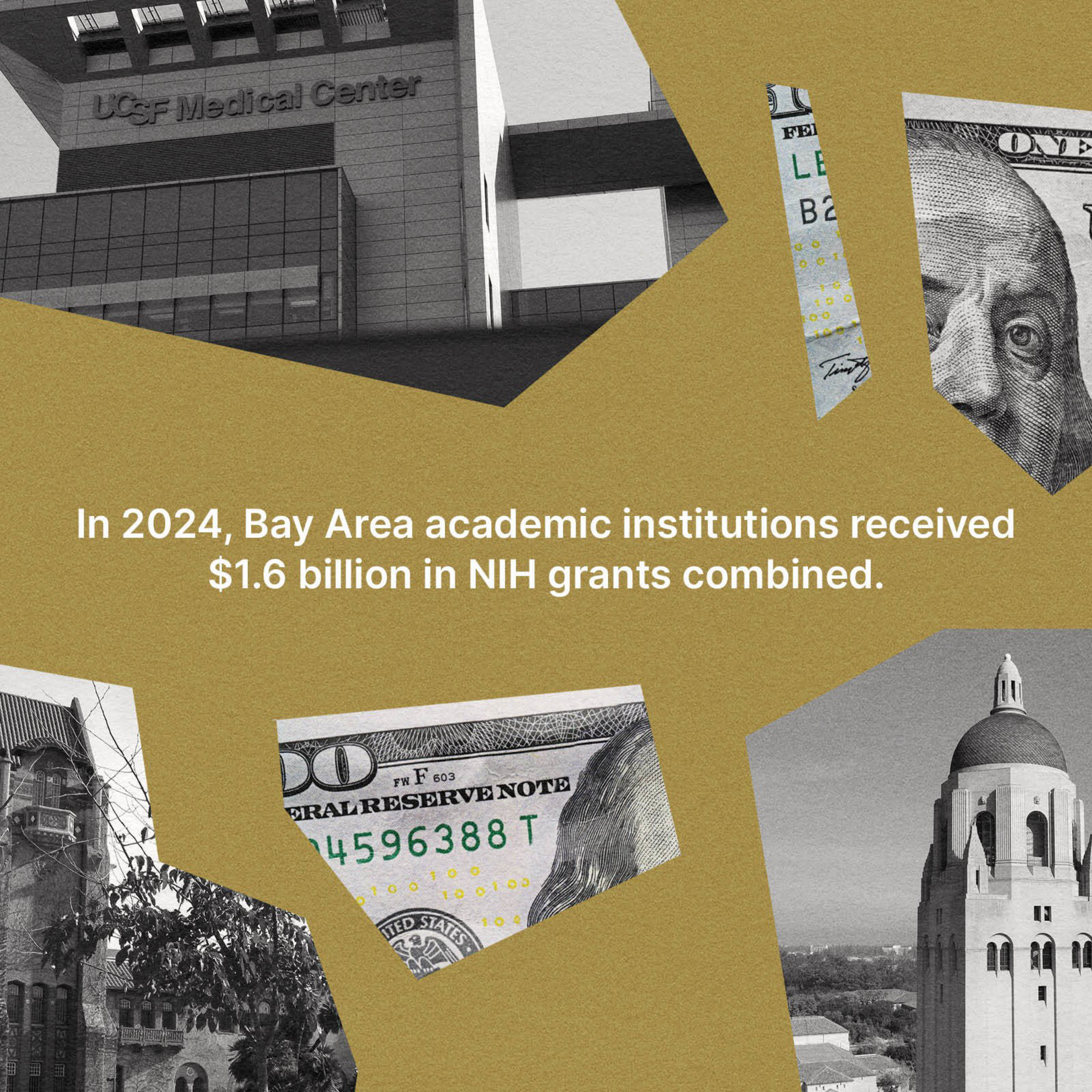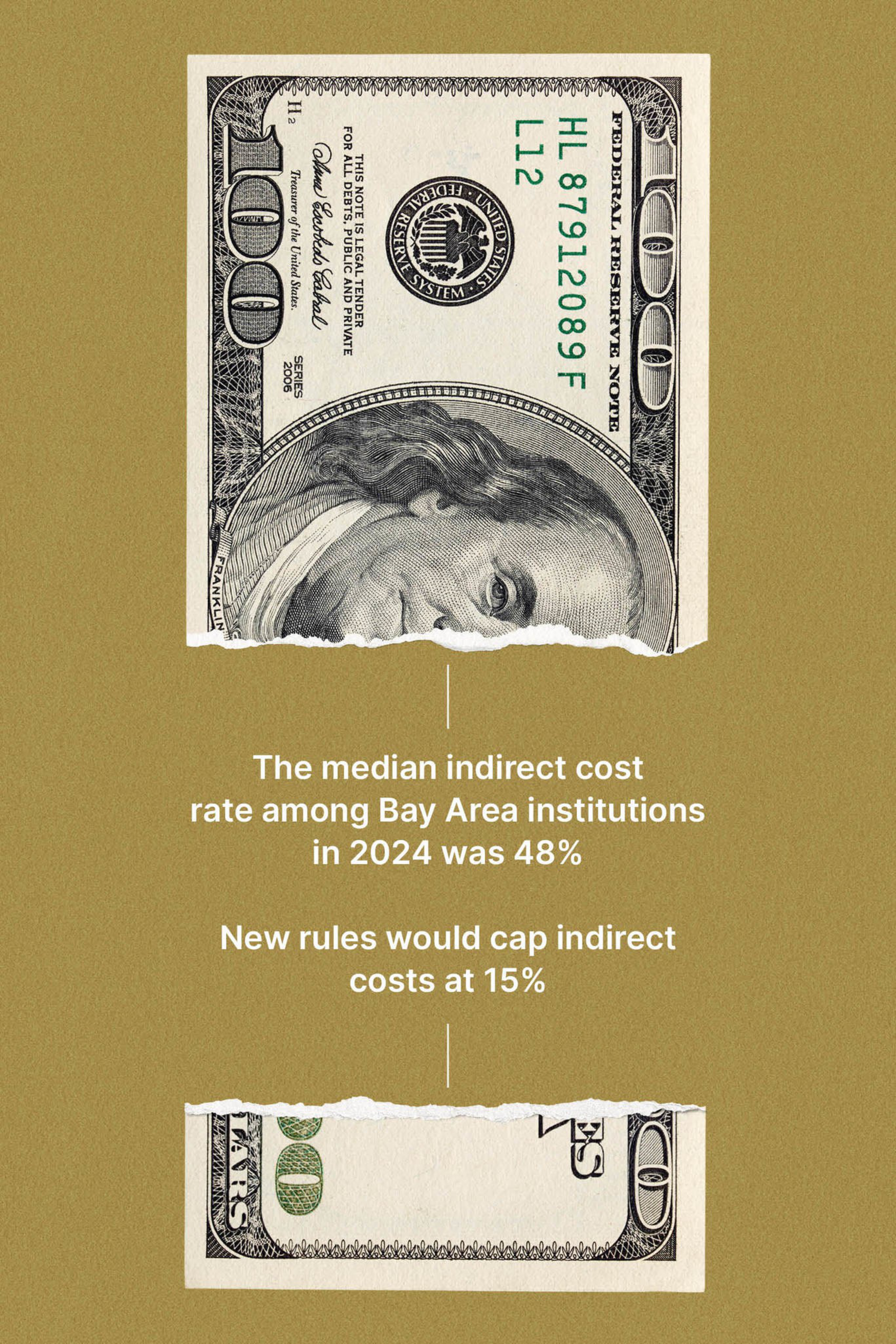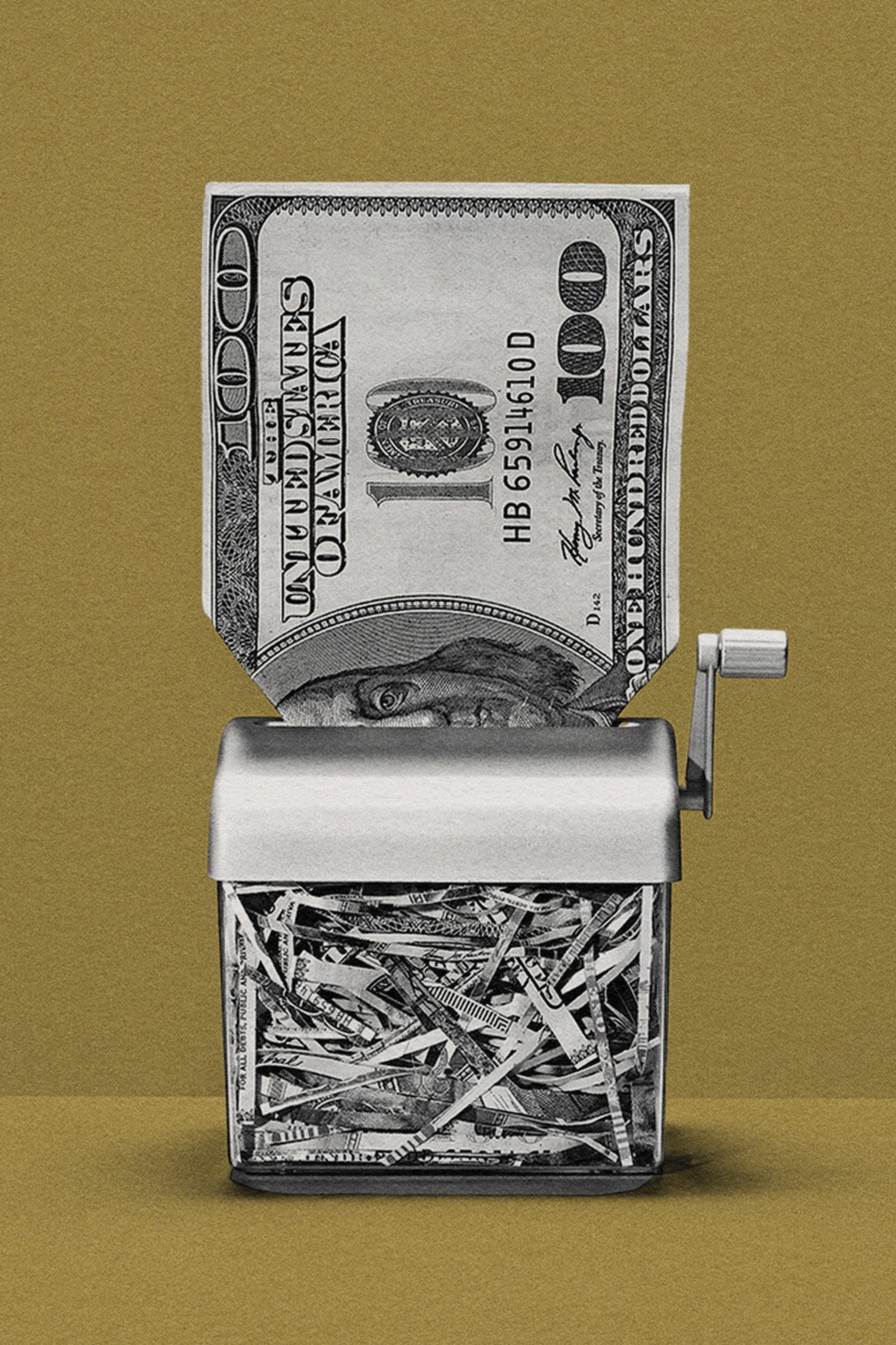UCSF neurology professor Adam Boxer anxiously faced the prospect of having to call off a landmark clinical trial before it started — one that could lead to the first effective drugs for a deadly brain disease.
A Feb. 7 directive issued by the Trump administration would cap the funding Boxer received from the National Institutes of Health, which had granted more than $75 million (opens in new tab) to his research into an incurable neurodegenerative disorder called progressive supranuclear palsy.
“Losing any portion of this would be devastating,” Boxer said.
The order was directed at capping indirect costs (opens in new tab) at 15%. That is the money that funds institutions beyond the direct research: cleaning floors, maintaining buildings, keeping the lights on.
The cap would present a monumental shift and carve a billion-dollar hole in Bay Area universities’ budgets in coming years, hobbling a key driver of the region’s economy.

Two-thirds of the almost 3,000 grants received by Bay Area educational institutions in the 2024 fiscal year had indirect cost rates of more than 15%, meaning they would have been subject to cuts under the new NIH directive.
The median indirect cost rate among those institutions was 48%. The NIH currently reimburses University of California campuses an average negotiated indirect cost rate of 59%, according to a UC spokesperson.
A judge blocked the order Monday following a lawsuit by 22 states, including California. But relief, like the court stay, is temporary.
Boxer and other scientists who spoke to The Standard said that they expect the federal assault on research funding to continue as long as President Trump is in office, and that the impact of slashing billions in research grant funding would ripple far beyond university campuses.

Money on the line
The Bay Area is home to some of the institutions that receive the most NIH funding in the country. To understand the potential local impact of the Trump directive, The Standard analyzed last year’s NIH grant data. If the directive had come during the 2024 fiscal year, the $1.6 billion in federal grant funding for Bay Area education institutions would have been cut by $282 million.
Last year, UCSF received nearly $815 million from the agency, more than any other U.S. academic institution except Johns Hopkins University. UCSF says it has been the top public university recipient of NIH funds for nearly two decades. Under the new rules limiting indirect costs, its grant funding would have been cut by $138 million.
The $613 million Stanford University received in NIH grants last year ranked it 10th in the country. It would have lost $114 million in 2024 if the cap had been in place. Stanford officials say future annual losses could reach $160 million (opens in new tab).
Research institutes in the Bay Area were also significant recipients of NIH grant funding in 2024, taking in 316 grants worth $261 million.
Representatives of several institutes told The Standard they anticipate that they could lose funding under the new NIH directive; among them are the Buck Institute for Research on Aging (a potential $10 million loss), the Northern California Institute for Research and Education ($6.3 million), and the Palo Alto Veterans Institute for Research ($1.9 million).
‘We could still lose’
The dust hasn’t settled from the Trump administration’s flurry of agency closures and budget cuts in recent weeks. Still, it’s clear that few cities have more to lose than San Francisco, where UCSF rakes in the most NIH dollars of any public university.
After news came of the NIH drawdown, Dr. Monica Gandhi (opens in new tab), head of the UCSF-Bay Area Center for AIDS Research, spent the weekend worrying about having to shut down labs, lay off scores of people, and grind research to a halt. She and others at the university helped put together long briefs for attorneys detailing their research and spending in an effort to save themselves.
“People are acting like these schools are building palaces, but they’re supporting direct research by giving us the infrastructure,” Gandhi said. “There’s just so much we would have lost, and that we could still lose.”

The Center for AIDS Research is supported almost entirely by indirect rates from the $38 million in NIH grants steered toward Gandhi’s research over the past decade. The funding covers electricity, water, janitorial staff, and salaries, among other infrastructure for the 750 researchers under her purview.
It also supports efforts well beyond the campus, undertaken via partnerships with public and private entities across the U.S. and in South Africa and India.
“The degree of anxiety this caused, it’s just an incredible waste of time,” Gandhi said. “And I have a feeling we’re going to go through this again and again over the next four years as the [Trump] administration attacks science in a very chaotic, sudden way.”
Gandhi said she’s bracing for a drawn-out onslaught from the Trump administration because of the ideologies that seem to be driving it. When the NIH announced the 15% cap, the language and logic of its communique seemed to borrow from a Heritage Foundation blueprint to radically reshape the government.
“This was in Project 2025,” Gandhi told The Standard. “This wasn’t something that Elon Musk just thought about on a whim.”
The 1,000-or-so pages of the prescription for conservative reform contends that indirect grant costs have contributed to “massive growth in DEI staff at U.S. universities.”
Though the NIH memo makes no mention of diversity, equity, and inclusion policies or Project 2025, it cites some of the same numbers and rationale as the Heritage Foundation report, casting universities as wasteful spenders compared with private foundations that don’t have to use federal funds to cover such costs as facility maintenance.
'You lose a future where we have healthier people.'
Sam Myers, La Jolla Institute for Immunology
Sam Myers, who runs a lab of researchers studying autoimmune diseases at La Jolla Institute for Immunology (opens in new tab) and works with UCSF, called the proposed NIH cuts “utterly catastrophic.” His work is 85% funded by the NIH, he said, and the 15% indirect-cost cap would require him to lay off half his lab staff in order to cover rent, janitors, and other necessary infrastructure.
“That’s, like, the best-case scenario,” he said. “Worst-case scenario is that we’d just shut down. … Then, I would have to think about finding a non-science job. A lot of scientists would, and a lot wouldn’t even want to enter into the field in the first place.”
The knock-on effects to not just the economy but the country are hard to imagine, Myers added: “You lose a future where we have healthier people.”
‘Everyone should care about these cuts’
While a federal judge has temporarily paused (opens in new tab) the funding cuts, the threat comes at a vulnerable time for the Bay Area’s economy. Nonprofits, another cornerstone of the region’s workforce, are already in the crosshairs of a series of executive orders.
Meanwhile, Bay Area business has struggled to recover from the pandemic, with round after round of tech layoffs and restaurant closures.
Amid the turmoil, the education and healthcare sectors have been rare “green shoots” in the economy, continuing to flourish despite the inclement conditions, according to Abby Raisz, research director of the Bay Area Council Economic Institute.
“Biotech, life sciences — these have been real bright spots of our economy,” said Raisz. “We’re definitely seeing a lot of growth in those sectors, and we want to encourage that growth to continue.”
If the sector stagnates, or reverses course, it could have serious implications for the local workforce. UCSF is San Francisco’s second-largest employer (opens in new tab), with a staff north of 29,000, representing more than 5% of all city employment.
'Every bit of scientific progress that’s federally funded impacts every person, every community.'
Heather Pierce, Association of American Medical Colleges
Ted Egan, San Francisco’s chief economist, said that if funding cuts force layoffs at UCSF or other major universities, “that would have ripple effects that would hurt the entire economy.”
The NIH funding is “a very big part, not just of California’s sort of economic accounting, but it’s an ingredient to California’s competitiveness,” he said. “You don’t have innovation unless you have people first working on research to produce new ideas.”
Heather Pierce, a senior director at the Association of American Medical Colleges, warned that NIH funding cuts would stop crucial research in its tracks.
“Every bit of scientific progress that’s federally funded impacts every person, every community,” Pierce said. “Everyone should care about these cuts.”

